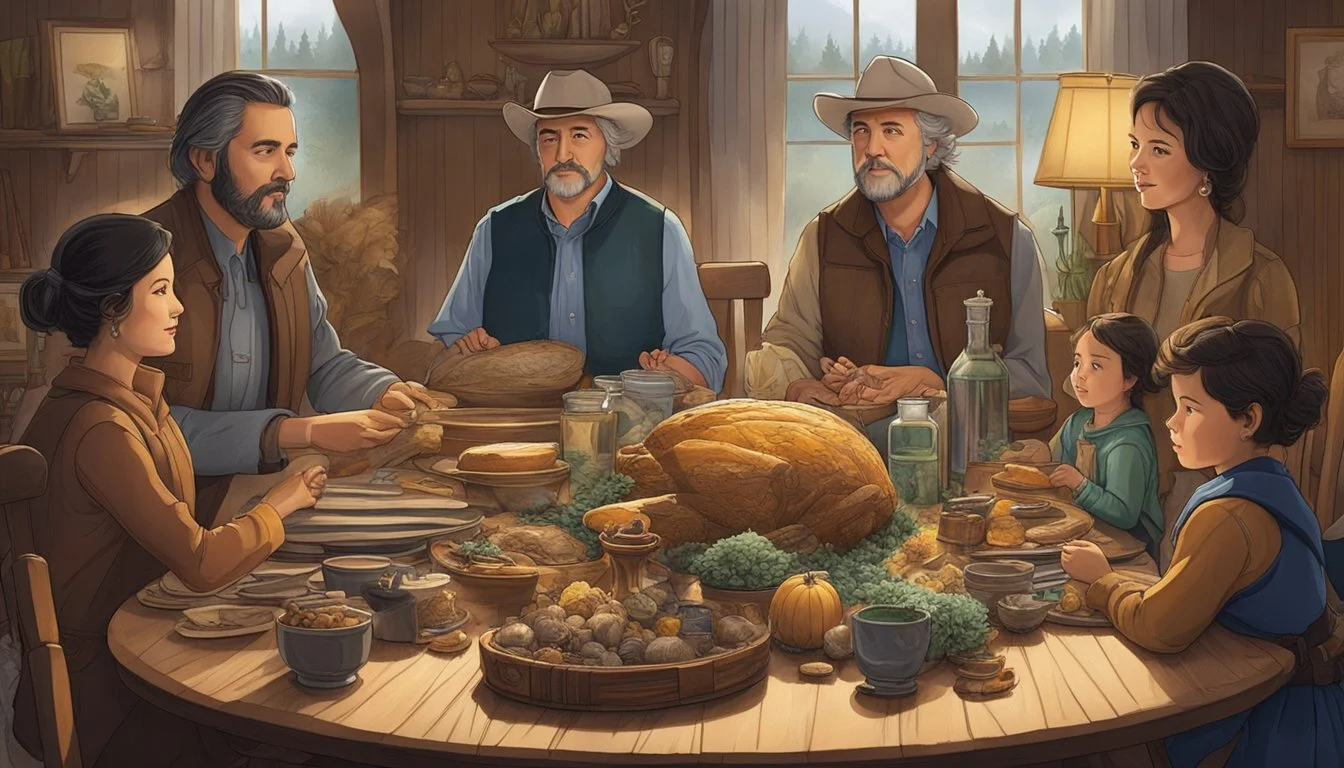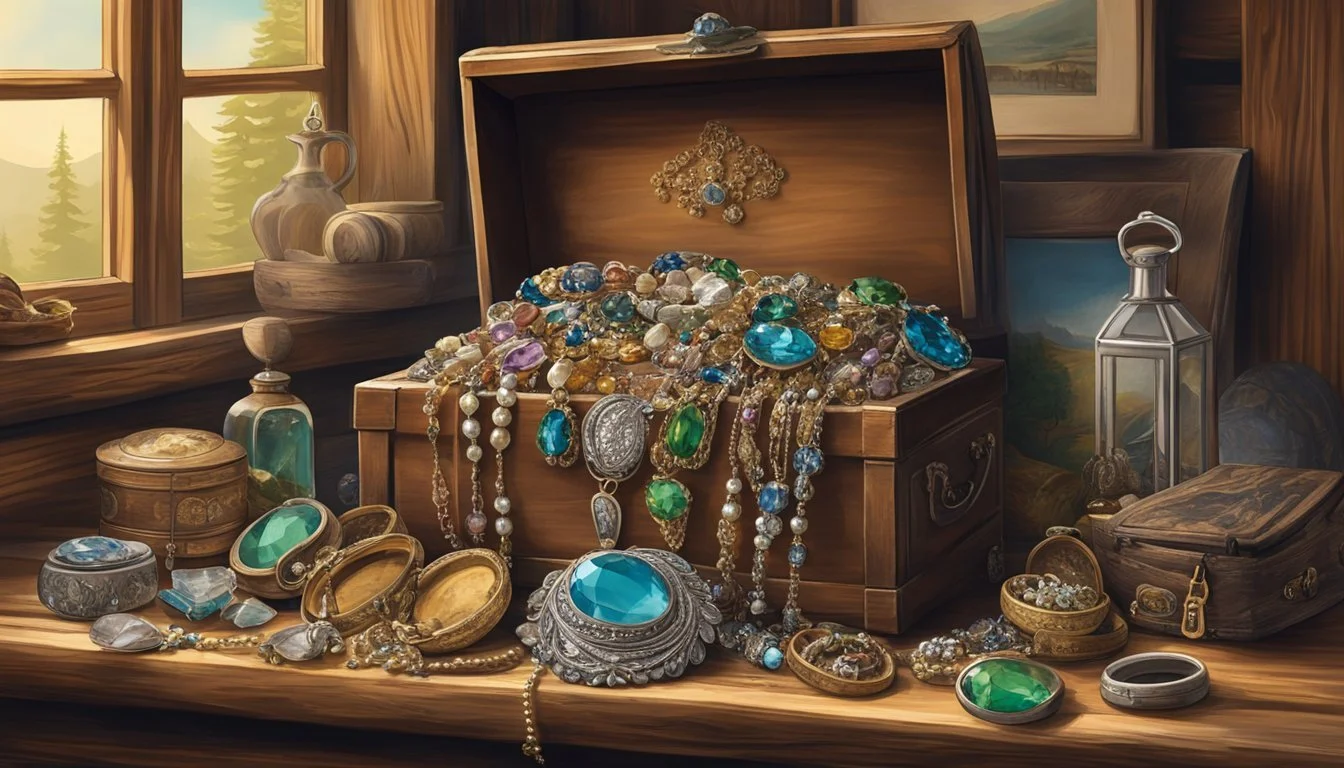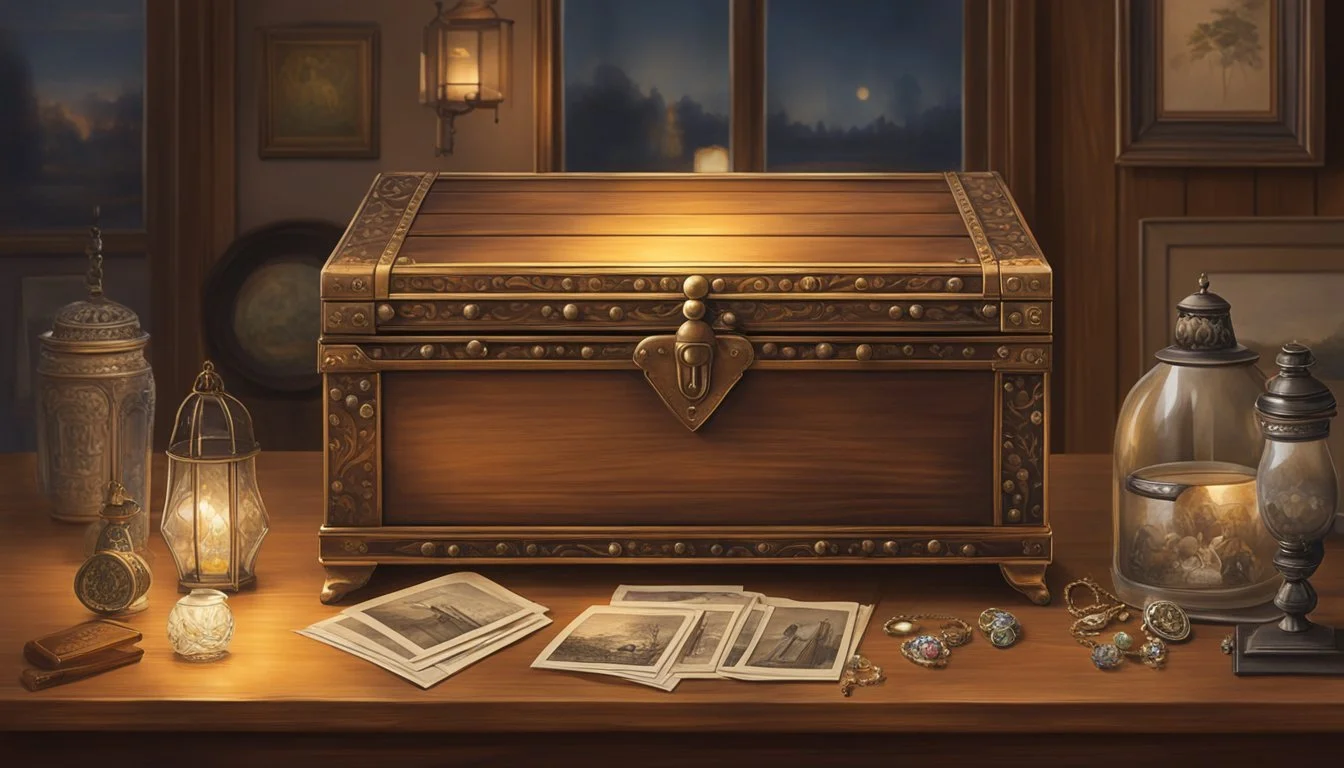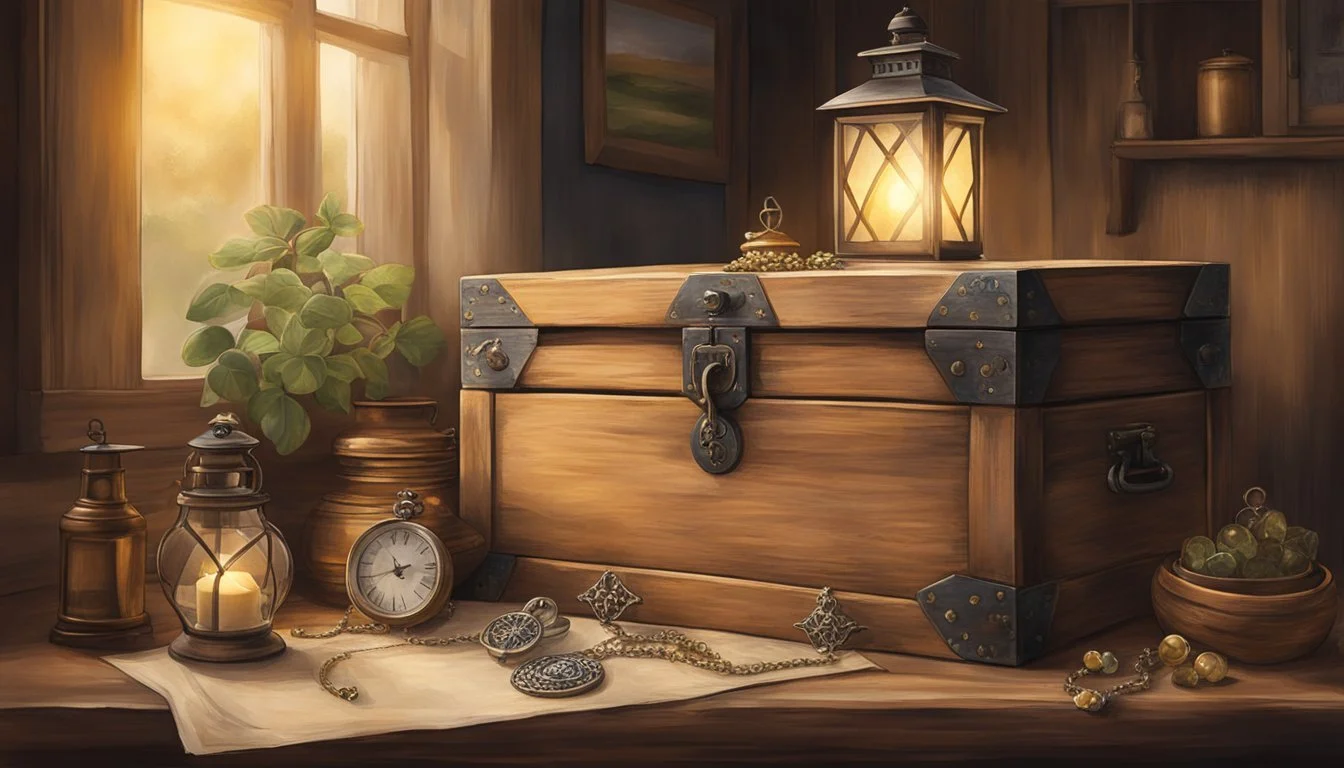Family Heirlooms and Artifacts: Symbols of Heritage in Yellowstone
Preserving Legacy Through Generations
Family heirlooms and artifacts hold a special place in the heart of Yellowstone's rich cultural tapestry. These treasured objects serve as tangible links to the past, connecting generations and preserving the unique heritage of the region. Family heirlooms in Yellowstone often reflect the area's natural beauty, frontier history, and indigenous cultures, offering invaluable insights into the lives of those who have called this majestic landscape home.
From intricately beaded moccasins to well-worn cowboy hats, each artifact tells a story of survival, adaptation, and tradition. Yellowstone's heirlooms may include items like antique fishing rods, hand-carved wooden utensils, or vintage park ranger badges. These objects not only carry personal memories but also embody the spirit of adventure and respect for nature that has long defined the Yellowstone experience.
Preserving these symbols of heritage is crucial for maintaining cultural identity and educating future generations about Yellowstone's diverse history. Museums, visitor centers, and local families play vital roles in safeguarding these precious artifacts, ensuring that the stories they hold continue to inspire and inform for years to come.
The Concept of Family Heirlooms and Artifacts
Family heirlooms and artifacts serve as tangible links to our past, carrying stories and memories across generations. These cherished items hold deep personal and cultural significance, connecting us to our heritage and ancestry.
Defining Heirlooms and Artifacts
Heirlooms are valuable possessions passed down through generations within a family. They can be any item with sentimental or monetary worth, such as jewelry, furniture, or photographs. These treasured pieces often have personal stories attached to them, making them irreplaceable to family members.
Artifacts, in contrast, are objects of historical or cultural interest. They may be family-owned or part of broader cultural heritage. Examples include traditional clothing, tools, or ceremonial items. Artifacts provide insights into past ways of life and cultural practices.
Both heirlooms and artifacts contribute to a family's sense of identity and continuity. They serve as physical reminders of ancestral experiences and values.
Heirlooms vs. Artifacts: Understanding the Difference
While heirlooms and artifacts share similarities, key distinctions exist between them. Heirlooms are typically personal items with specific family connections. They may hold monetary value but are primarily cherished for their emotional significance.
Artifacts, on the other hand, often have broader historical or cultural importance. They can provide information about societal norms, technological advancements, or artistic traditions of a particular era or culture.
Some items can be both heirlooms and artifacts. For example, a traditional kimono passed down through generations is a family heirloom. It also serves as an artifact representing Japanese cultural heritage.
The primary difference lies in the item's perceived value. Heirlooms are treasured for their family ties, while artifacts are valued for their historical or cultural relevance.
Historical and Cultural Value of Heirlooms
Family heirlooms serve as tangible links to the past, preserving history and cultural heritage across generations. These cherished objects offer unique insights into ancestral lives and traditions.
The Role of Heirlooms in Preserving History
Heirlooms act as physical records of family and societal history. A Civil War-era rifle passed down through a Yellowstone family might reveal details about their ancestor's military service. Antique farming tools can illustrate the agricultural practices of early settlers in the region.
These objects often outlast written records, providing valuable historical context. An old family Bible with handwritten entries can document births, marriages, and deaths from centuries past. Vintage photographs capture moments in time, showing how people lived and dressed in earlier eras.
Heirlooms also preserve craftsmanship and technological advancements. A hand-stitched quilt showcases textile skills, while an early radio set demonstrates the evolution of communication technology.
Cultural Significance of Family Artifacts
Family heirlooms reflect and reinforce cultural identity. Traditional Native American beadwork passed down in Yellowstone families maintains connections to indigenous heritage. An immigrant family's heirlooms might include items from their country of origin, helping descendants understand their cultural roots.
These artifacts often embody cultural values and beliefs. A family Bible signifies religious traditions, while a set of fine china represents hospitality customs. Wedding rings symbolize enduring family bonds across cultures.
Heirlooms can also preserve language and artistic traditions. A handwritten recipe book might contain regional dialect or ingredients specific to a cultural group. Folk art pieces showcase unique artistic styles tied to particular cultures or time periods.
Family Heirlooms as Storytellers
Family heirlooms serve as powerful conduits for preserving and sharing ancestral tales. These cherished objects carry the weight of personal stories and family history, connecting generations through tangible links to the past.
Heirlooms and the Stories They Carry
Each heirloom holds a unique narrative, offering glimpses into the lives of those who came before. A grandmother's wedding ring may reveal a tale of wartime romance, while a great-grandfather's pocket watch might speak of his dedication to punctuality and hard work.
These objects often bear physical marks of their journey through time. Scratches, wear patterns, and repairs all add layers to their stories.
Heirlooms can also illuminate broader historical contexts. An immigrant ancestor's suitcase, for example, might shed light on the family's journey to a new land and the challenges they faced.
Personal Anecdotes and Family Legends
Heirlooms frequently become focal points for sharing personal anecdotes and family legends. As these objects are passed down, they accumulate stories that blend fact and family lore.
A well-worn Bible might prompt tales of an ancestor's unwavering faith during difficult times. An old toolbox could spark memories of a grandfather's skilled craftsmanship and the lessons he imparted.
These stories often reveal family values, traditions, and character traits that have endured through generations. They help younger family members connect with their roots and understand their place in the family's ongoing story.
Sharing these narratives during family gatherings strengthens bonds and creates new memories centered around these treasured objects.
Types and Examples of Heirlooms
Family heirlooms come in many forms, from precious jewelry to practical everyday objects. These treasured items carry stories and memories across generations, connecting families to their past and heritage.
Jewelry, Furniture, and Quilts
Jewelry often tops the list of cherished family heirlooms. Engagement rings, passed down through generations, symbolize enduring love and family bonds. Antique necklaces, brooches, and watches can also hold immense sentimental value.
Furniture pieces like four-poster beds, armoires, and dining tables frequently become heirlooms. These items blend practicality with history, having witnessed countless family moments over the years.
Handmade quilts are prized heirlooms in many families. Each stitch and fabric choice tells a story, preserving family traditions and craftsmanship. Quilts often incorporate meaningful patterns or fabrics from important family events or clothing items.
Tools, Diaries, and Everyday Objects
Vintage tools can become unexpected yet treasured heirlooms. A grandfather's woodworking tools or a great-aunt's sewing machine connect modern generations to their ancestors' skills and trades.
Diaries and journals offer intimate glimpses into family history. These written records preserve personal thoughts, daily life details, and historical events from a family member's perspective.
Everyday objects like kitchen utensils, pocket knives, or even old toys can become cherished heirlooms. A well-used rolling pin or a childhood teddy bear can evoke powerful memories and emotions, linking past and present family members through shared experiences.
The Emotional Significance of Heirlooms
Family heirlooms forge deep emotional connections and instill a sense of belonging across generations. These treasured objects carry the weight of family values and legacies, serving as tangible links to our ancestors and heritage.
Heirlooms and Emotional Connections
Heirlooms evoke powerful emotions by connecting individuals to their family history. A grandmother's wedding ring may spark joy and nostalgia, reminding the wearer of cherished moments and shared experiences. These objects often become repositories of personal stories and memories.
Antique furniture pieces, for example, can transport family members back to childhood gatherings or holiday celebrations. The emotional resonance of heirlooms strengthens family bonds and helps preserve important traditions.
Heirlooms Inspiring a Sense of Belonging
Passed-down artifacts reinforce a sense of belonging within a family lineage. A great-grandfather's pocket watch or a great-aunt's handmade quilt can make individuals feel part of something larger than themselves.
These items symbolize shared family values and experiences, creating a common thread that unites relatives across time and distance. Heirlooms often play a crucial role in family rituals and storytelling, helping younger generations connect with their roots and understand their place in the family's ongoing narrative.
By embodying family legacies, heirlooms inspire pride in one's heritage and a desire to honor and continue family traditions.
Preservation and Documentation
Preserving family heirlooms and documenting their stories are crucial steps in maintaining Yellowstone's cultural heritage. These practices ensure that precious artifacts and their histories endure for future generations.
Maintaining and Restoring Heirlooms
Proper care is essential for preserving family heirlooms. Keep artifacts clean and dust-free, minimizing handling to prevent damage. Store items in a controlled environment, away from direct sunlight and extreme temperatures. For delicate or damaged pieces, consult professional conservators.
Digital preservation offers a modern solution for safeguarding photographs and documents. Scan these items at high resolution and store copies in multiple locations, including cloud storage. This protects against physical deterioration and provides easy access for genealogical research.
Consider professional appraisal for valuable items. Experts can provide insights on proper care and insurance needs. Regular maintenance, such as gentle cleaning and appropriate storage, helps extend the life of cherished objects.
Documenting Heirlooms for Future Generations
Thorough documentation is key to preserving the stories behind family heirlooms. Create detailed records for each item, including:
Physical descriptions
Known history and provenance
Family stories associated with the artifact
Photographs from multiple angles
Incorporate these details into your family tree, linking items to specific ancestors. This connects objects to broader family narratives.
Utilize online databases and genealogical resources to expand your knowledge of an heirloom's context. These tools can provide historical background and help verify family stories.
Consider creating a digital catalog of your family's heirlooms. This can serve as a comprehensive record and aid in estate planning. Include high-quality images and all relevant information for each item.
Heirlooms in the Modern Context
Family heirlooms maintain their significance in today's world, adapting to changing times while preserving connections to the past. Their role continues to evolve as technology and societal values shift.
The Transition of Heirlooms in a Digital Era
Digital technology has transformed how families preserve and share heirlooms. Photos and documents are now scanned and stored in cloud services, ensuring their longevity. Virtual museums allow families to create online exhibitions of their keepsakes.
Social media platforms enable relatives to share stories and images of heirlooms instantly across vast distances. This digital preservation enhances the continuity of family history.
Some families are creating digital heirlooms, such as video diaries or curated social media accounts, to pass down to future generations. These new forms of keepsakes reflect modern methods of storytelling and memory-keeping.
Valuing Heirlooms in Today's Society
The meaning of heirlooms has shifted in contemporary culture. While some view them as clutter, others see them as irreplaceable links to family heritage. Economic status can influence attitudes towards heirlooms.
Minimalism trends have led some to pare down possessions, carefully selecting which heirlooms to keep. This often results in a focus on items with the strongest emotional or historical significance.
TV shows about antiques and family history have sparked renewed interest in heirlooms. Many people now research the historical and monetary value of their keepsakes, sometimes discovering unexpected treasures.
Heirlooms demonstrate resilience, surviving through generations despite changing tastes and lifestyles. They serve as tangible reminders of family identity and shared experiences in an increasingly digital world.
Heirlooms, Genealogy, and Family Trees
Family heirlooms serve as tangible links to our ancestors, providing valuable clues for genealogical research. These cherished items often hold hidden information that can help illuminate family histories and expand family trees.
Tracing Family History Through Heirlooms
Heirlooms offer unique insights into family lineages. Inscribed jewelry, engraved watches, and monogrammed items can reveal names, dates, and relationships. Old photographs may include handwritten notes identifying individuals and locations. Family Bibles frequently contain birth, marriage, and death records spanning generations.
Artifacts like traditional clothing or ceremonial objects can indicate cultural backgrounds and migrations. Occupational tools might suggest family trades or professions. Even the style and craftsmanship of furniture or artwork can point to specific time periods or regions.
Linking Artifacts to Genealogical Research
Incorporating heirlooms into genealogical research enhances family tree accuracy. Dates on keepsakes can confirm or challenge existing records. Locations mentioned in letters or inscriptions may lead to new avenues of investigation.
Researchers can cross-reference heirloom information with official documents:
Census records
Marriage certificates
Military service files
Immigration papers
This process often uncovers previously unknown relatives or family connections. DNA testing combined with heirloom analysis can further validate family relationships and origins.
Preserving and documenting heirlooms is crucial for future generations. Detailed descriptions, photographs, and provenance records ensure these valuable genealogical resources remain accessible.
The Future of Family Heirlooms
Family heirlooms continue to play a vital role in preserving heritage and connecting generations. As times change, so do the ways we pass down and cherish these meaningful artifacts.
Passing on Heirlooms to the Next Generation
Thoughtful planning is essential when transferring heirlooms to younger family members. Many families now create detailed inventories of their treasured items, including photographs and stories behind each piece. This helps ensure the significance of heirlooms isn't lost over time.
Digital archives are becoming increasingly popular. Families scan documents, photographs, and even 3D models of physical objects to create virtual heirloom collections. These digital libraries allow for easy sharing and preservation of family history.
Some families choose to distribute heirlooms while still alive, allowing them to witness the joy and appreciation firsthand. This approach also provides opportunities to share stories and memories associated with the items.
Challenges and Considerations for Modern Heirlooms
As lifestyles evolve, the nature of family heirlooms is changing. Younger generations often prefer experiences over physical possessions, leading to a shift in what's considered valuable to pass down.
Digital heirlooms, such as social media accounts, personal blogs, and email archives, present new challenges for preservation and access. Families must consider digital estate planning to ensure these modern artifacts remain accessible.
Space constraints in smaller homes can make it difficult to store large heirlooms. Some families opt for creative solutions like creating functional art pieces from inherited items or displaying them in rotation.
The increasing mobility of families across countries and continents adds complexity to heirloom preservation. Shipping valuable items internationally requires careful planning and sometimes legal considerations.








